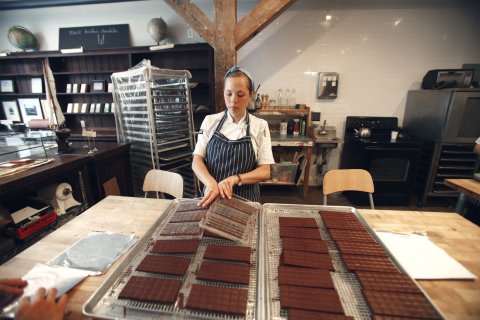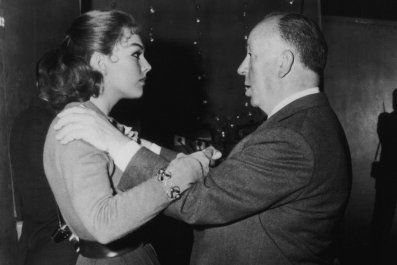Long before it winds up in a candy bar or another type of confection, chocolate begins its life as a cocoa bean. These beans, about the size of peanuts, are found within the seed pods of the Theobroma cacao plant, which is grown in many tropical regions of the world to produce cocoa.
When the pods ripen, they are cut from the tree and their pulp and seeds are scooped out. They are then fermented, dried and roasted. Finally, they are cracked and de-shelled, leaving chocolate "nibs" which are usually further processed and mixed with sugar and other component to make various confections. Each of these steps is important, coaxing along thousands of chemical reactions that bring out just the right flavor. And because making good chocolate is big business, many of the steps have been studied quite a bit, with producers in search of cocoa perfection.
But there is one possible stage that isn't usually incorporated into the processing and it can make chocolate healthier. It's called pod storage, or "pulp preconditioning," and it's when farmers set the pods aside for several days or more than a week before fermentation. Pod storage is a traditional practice in Ghana, done to "to buy [farmers] time so they can harvest more" before the fermenting stage, says Emmanuel Afoakwa, a scientist and chocolate expert at the University of Ghana.

The practice also, it turns out, significantly increases the antioxidant activity of roasted cocoa beans. Antioxidants are substances which inhibit the activity of free radicals in your body, chemicals that can damage cells and DNA. They are found in lots of food sources, including berries, veggies, nuts and, of course, chocolate. Afoakwa's team isn't sure exactly why the traditional process boosts chocolate's antioxidant activity. Their findings, presented March 24 at the annual meeting of American Chemical Society in Denver, show that the pod storage step breaks down some of the more bitter polyphenols—a broad class of plant-based chemicals—converting them to more "chocolaty" flavors upon roasting. In the process, it boosts the activity of antioxidant, through some as-yet-unknown chemical processes, Afoakwa says.
Pulp recondition doesn't only make chocolate better for you, it makes it taste better, too—Afoakwa says the prevalence of the process in Ghana may help explain why the country produces what is considered by many, including the Cadbury company, to be among the world's best cocoa beans.
Pod storage increases the activity of various enzymes that "cause a reduction in the bitterness... of chocolate, as a result of the oxidation of astringent polyphenols," thus making it taste sweeter, says Giampiero Sacchetti, a researcher at Italy's University of Teramo who wasn't involved in the study.




























